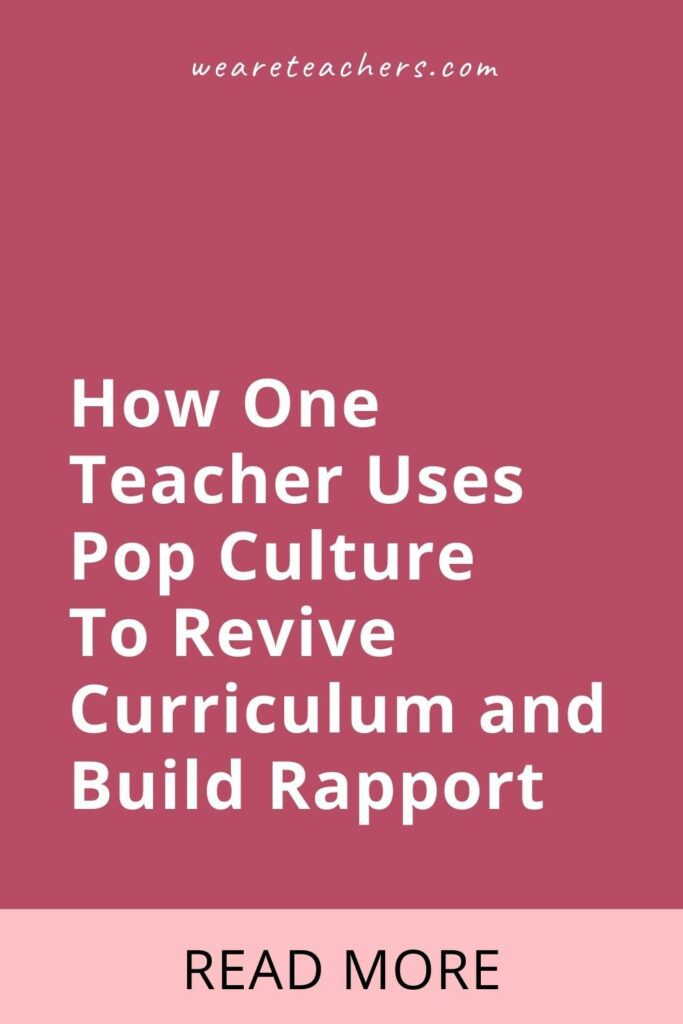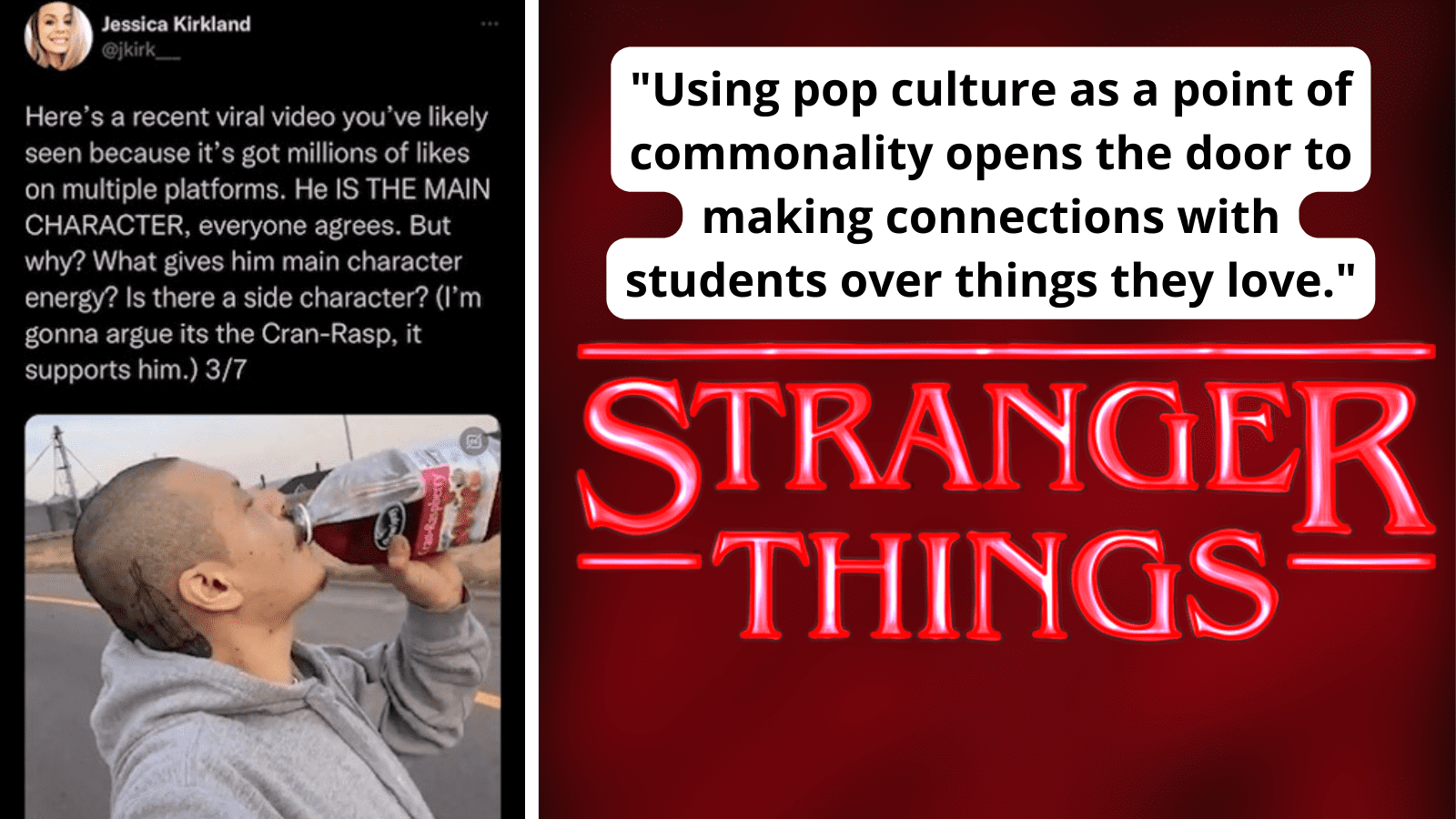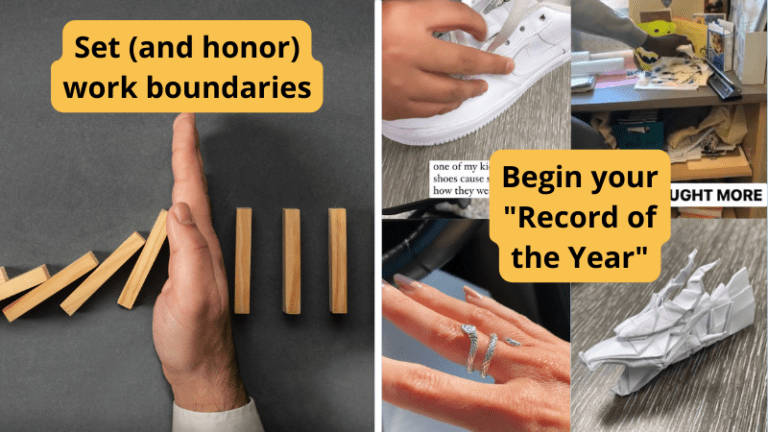As secondary teachers, one of our biggest challenges is making learning feel fun while also hitting standards and meeting curriculum requirements. Over the years I’ve found that my tendency to embed pop culture into my instruction has been helpful in achieving these goals. Is it necessary to know or participate in every pop culture reference or trend to reach the kids? Definitely not (Caveat: It’s easy to go overboard if you try to include too much too often.). But when done with a light touch and in a genuine way, it can work beautifully. Here are a few ways I’ve included pop culture in my classroom that have had positive impacts on learning and our environment.
What’s New Is Actually Old
As an ELA teacher, some of the texts we read as a class can feel outdated, irrelevant, or lacking context for students. One of the best ways to bring these texts to life is by connecting them to current trends or media that students are familiar with. This past school year, Netflix’s Squid Game was popular during the time my ninth graders were reading The Odyssey. As the students learned the Hero’s Journey and discussed the show they were all bingeing, it occurred to me to ask them: Was Squid Game a Hero’s Journey? There followed a lively class discussion citing evidence from the series to defend their positions. Students demonstrated true understanding of this literary concept by applying its attributes to the series.
Similarly, season four of Stranger Things was released later in the year as my 10th graders read Frankenstein. The students were able to build strong text-to-text connections between Shelley’s Frankenstein and the characters of 1980s Hawkins, Indiana, drama. Sometimes all it takes to make an outdated topic feel immediate is to refresh the paradigm and show students how similar concepts recur in media they are familiar with.
Showing vs. Telling: Real-Life Moments
TikTok has been a boon for making difficult skills and concepts digestible and easy to understand in the classroom. In my rhetoric unit this past year, I provided examples of TikToks posted on corporate accounts such as Duolingo to illustrate companies’ use of ethos, pathos, and logos to reach their target audience: young people. In the fall of 2020, Nathan Apodaca’s viral TikTok showing him skateboarding onto a highway on-ramp while swigging from a jug of cran-raspberry juice to the sound of Fleetwood Mac’s “Dreams” helped the kids define “main character energy”—a unique form of character analysis.

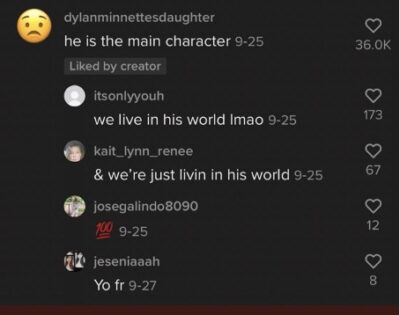
Currently trending sounds can succinctly illustrate the meaning of literary terms that can be hard to grasp in a vacuum. For example, a currently trending sound from the children’s show The Backyardigans in which a character saying “Funny, yes. But not funny haha, funny weird” is used by various TikTokers in their videos to perfectly express those small moments in life that we’d define as ironic.
This spring, the Johnny Depp/Amber Heard defamation trial was all over TikTok. Many of my students developed strong opinions on the case based on what they were seeing in the media. This led to many discussions connecting skills we’d practiced in class such as bias, connotation and denotation, and perspective and point of view and applying them to a real-life, current context. More important, it led to candid considerations of who was viewed as trustworthy and why. How was media influencing or driving our perception of each litigant? These discussions came from incorporating a pop culture event that overlapped with multiple societal issues—a timely, relevant, and broadly applicable learning experience.
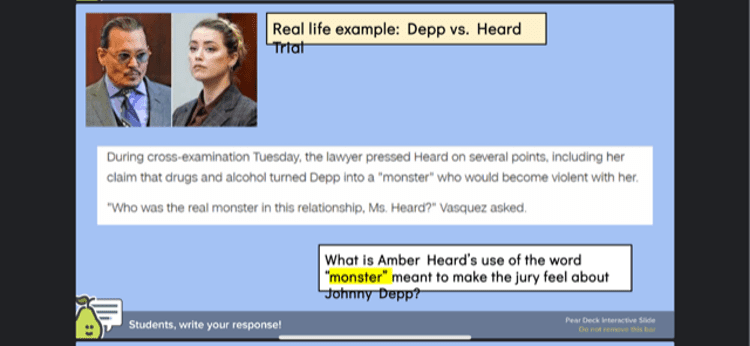
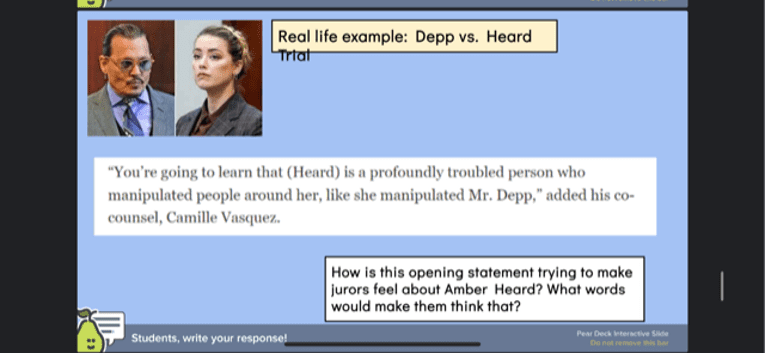
Building Classroom Connections and Rapport
Finally, using pop culture as a touchstone and point of commonality opens the doors to making connections with students over things they love. Being aware of popular shows or series gives us the opportunity to ask students about their interests. Then they become the experts by explaining something to us.
Currently trending topics often show up in our daily attendance questions at the beginning of class. Sometimes a working knowledge of pop culture can help us decode references between students or about a situation. Often the kids are surprised by what we catch, simply because they don’t always know that we inhabit many of the same cultural spaces. A baseline awareness of trending music, public figures, and notable events provides a rich starting point for conversations and connections. It shows students that we find the same things interesting and noteworthy that they do.
Key Tips:
- Any use of pop culture in the classroom should feel natural, never forced. If it isn’t genuine for you or the kids, it won’t be successful. Don’t force it!
- Moderation is important. Not every lesson or conversation needs to include a pop culture reference. In this case, less is more.
- Some things really should be just for the kids. I jokingly tell them, “I have TikTok, but I don’t play TikTok.” Know when something is relevant and usable, but also know when pulling it into the classroom might ruin some of the fun for students.
- Timeliness matters! Pop culture moves fast, and what worked this year may not work as well next year. Be willing to adapt and change as old references become obsolete or new trends pop up.
- This may go without saying, but always keep it school- and age-appropriate! Be a good steward of media and culture so that they can be as well.
Many of us start the school year looking for ways we can enhance, improve, or update existing units. As you spend a little more time on social platforms or streaming series this summer, notice what trends jump out to you. They might be just the thing to freshen up what’s gotten a bit stale, or the perfect example of how everything we do in the classroom is really all around us.
How do you use pop culture in the classroom? Let us know in the comments!
Plus, for more articles like this, be sure to subscribe to our newsletters.
